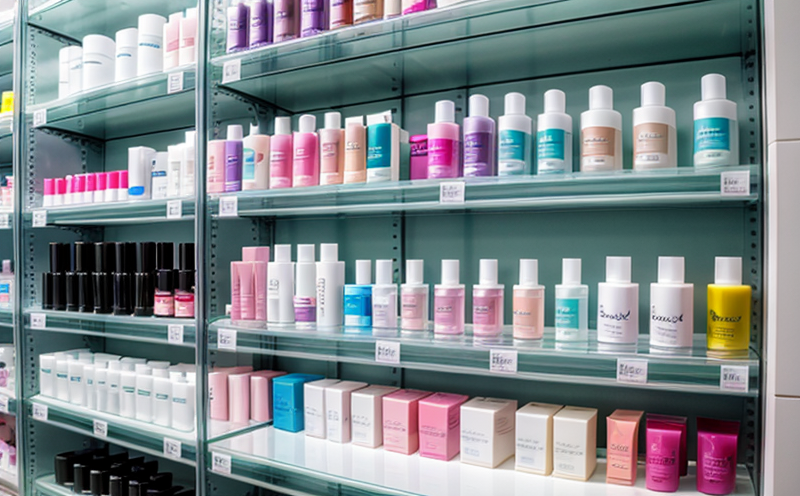Stability Testing of Cosmetic Active Ingredients
The stability testing of cosmetic active ingredients is a critical step in ensuring product quality and compliance with regulatory requirements. This process involves the evaluation of how well these ingredients maintain their chemical, physical, and microbiological properties over time under various environmental conditions.
Cosmetic active ingredients are subject to numerous factors that can influence their stability. These include exposure to light, temperature fluctuations, humidity, and microbial contamination. Stability testing helps identify any degradation products or changes in performance that could affect the efficacy and safety of the finished cosmetic product.
During this testing, samples are exposed to controlled environmental conditions designed to mimic real-world scenarios. For instance, high-temperature storage tests simulate exposure to hot climates, while accelerated light exposure replicates prolonged UV radiation. The goal is to assess the ingredient's shelf life and ensure it meets quality standards throughout its intended usage period.
Stability testing plays a pivotal role in product development by providing valuable insights into potential issues early on. This allows for adjustments to formulation or production processes if necessary, thereby minimizing risks associated with subpar products reaching consumers.
The process typically involves collecting baseline data before exposure begins and then conducting periodic checks at specified intervals throughout the test duration. These assessments help track any changes in the ingredient's characteristics over time.
It is essential to note that stability testing must adhere strictly to relevant standards set forth by regulatory bodies such as the International Organization for Standardization (ISO), American Society for Testing and Materials (ASTM), European Committee for Standardization (CEN), and others. Compliance with these guidelines ensures consistency across different markets and enhances consumer trust in the products.
Given its significance, proper planning and execution are crucial when conducting stability tests on cosmetic active ingredients. A well-defined protocol that considers all pertinent variables will yield accurate results and facilitate informed decision-making regarding product formulation and shelf life claims.
Applied Standards
| Standard Code | Title |
|---|---|
| ISO 25016-1 | Guidelines for the formulation and evaluation of cosmetic products - Part 1: General principles |
| ASTM D4839 | Standard Practice for Accelerated Stability Testing of Cosmetic Products |
| CEN/TS 15027-6 | Trial methods for the evaluation of cosmetic products - Part 6: Stability testing under accelerated conditions |
| IEC 62382 | Standard for Electrical Equipment in Medical Applications |
Benefits
- Ensures product quality and consistency over time.
- Reduces the risk of regulatory non-compliance due to substandard products.
- Promotes consumer trust by meeting international standards.
- Aids in optimizing production processes for better efficiency.
- Allows early identification and rectification of any issues within formulations.
- Facilitates accurate shelf life claims, enhancing marketing strategies.
International Acceptance and Recognition
The results from stability testing on cosmetic active ingredients are widely accepted across various countries globally. Regulatory bodies like the European Union (EU), United States Food and Drug Administration (FDA), and China's National Medical Products Administration (NMPA) all recognize the importance of this type of testing.
Compliance with internationally recognized standards such as ISO, ASTM, CEN, and IEC not only simplifies market entry but also enhances brand reputation. Companies that adhere to these guidelines are seen favorably by both regulators and consumers alike.





